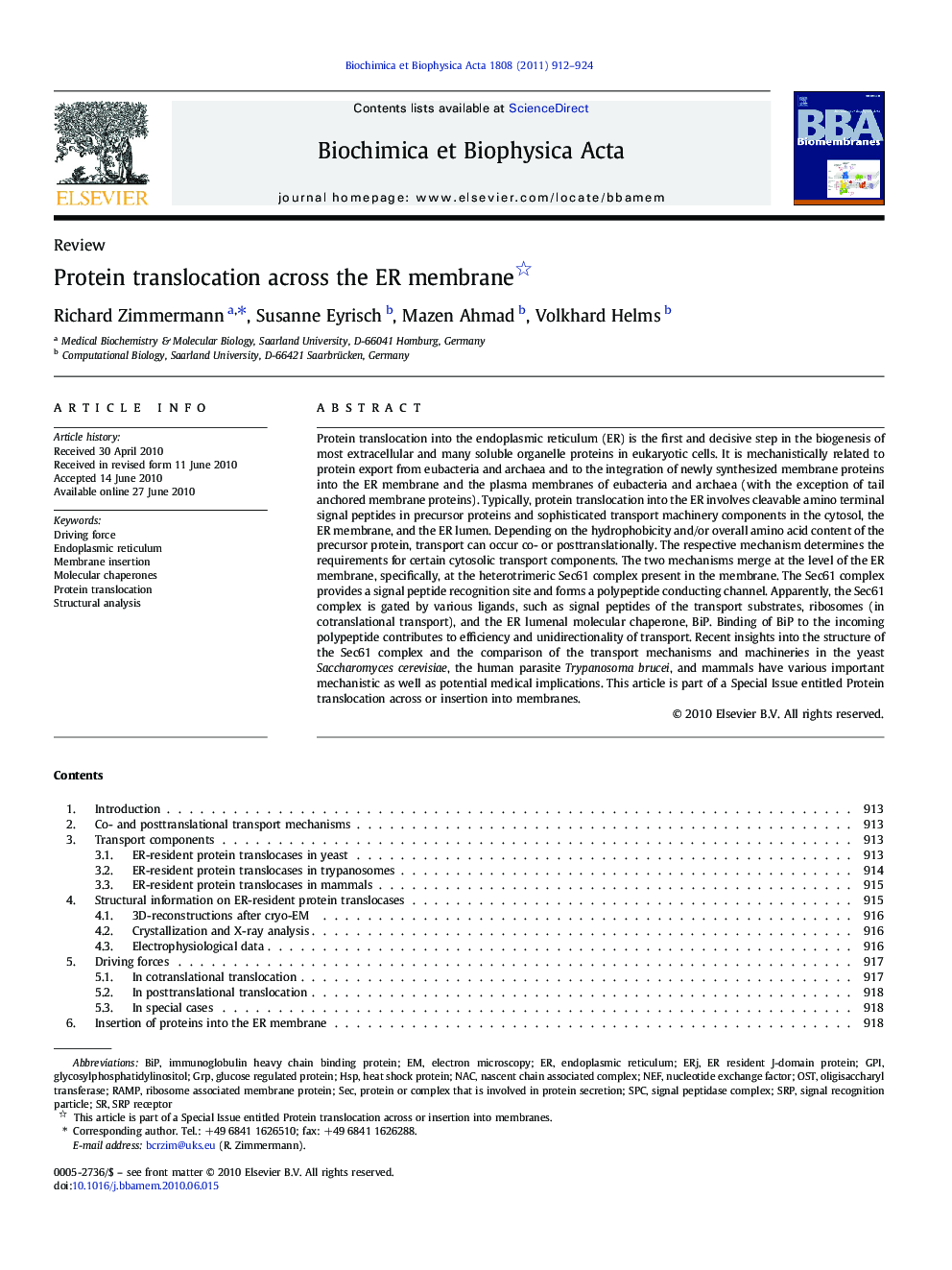| Article ID | Journal | Published Year | Pages | File Type |
|---|---|---|---|---|
| 10797826 | Biochimica et Biophysica Acta (BBA) - Biomembranes | 2011 | 13 Pages |
Abstract
Protein translocation into the endoplasmic reticulum (ER) is the first and decisive step in the biogenesis of most extracellular and many soluble organelle proteins in eukaryotic cells. It is mechanistically related to protein export from eubacteria and archaea and to the integration of newly synthesized membrane proteins into the ER membrane and the plasma membranes of eubacteria and archaea (with the exception of tail anchored membrane proteins). Typically, protein translocation into the ER involves cleavable amino terminal signal peptides in precursor proteins and sophisticated transport machinery components in the cytosol, the ER membrane, and the ER lumen. Depending on the hydrophobicity and/or overall amino acid content of the precursor protein, transport can occur co- or posttranslationally. The respective mechanism determines the requirements for certain cytosolic transport components. The two mechanisms merge at the level of the ER membrane, specifically, at the heterotrimeric Sec61 complex present in the membrane. The Sec61 complex provides a signal peptide recognition site and forms a polypeptide conducting channel. Apparently, the Sec61 complex is gated by various ligands, such as signal peptides of the transport substrates, ribosomes (in cotranslational transport), and the ER lumenal molecular chaperone, BiP. Binding of BiP to the incoming polypeptide contributes to efficiency and unidirectionality of transport. Recent insights into the structure of the Sec61 complex and the comparison of the transport mechanisms and machineries in the yeast Saccharomyces cerevisiae, the human parasite Trypanosoma brucei, and mammals have various important mechanistic as well as potential medical implications. This article is part of a Special Issue entitled Protein translocation across or insertion into membranes.
Keywords
SECSRP receptorGRPGPiHspSRPNACSPCBiPprotein translocationOstStructural analysismembrane insertionsignal recognition particlerampsignal peptidase complexMolecular chaperonesendoplasmic reticulumnucleotide exchange factorElectron microscopyNefDriving forceImmunoglobulin heavy chain binding proteinglucose regulated proteinHeat shock proteinglycosylphosphatidylinositol
Related Topics
Life Sciences
Biochemistry, Genetics and Molecular Biology
Biochemistry
Authors
Richard Zimmermann, Susanne Eyrisch, Mazen Ahmad, Volkhard Helms,
